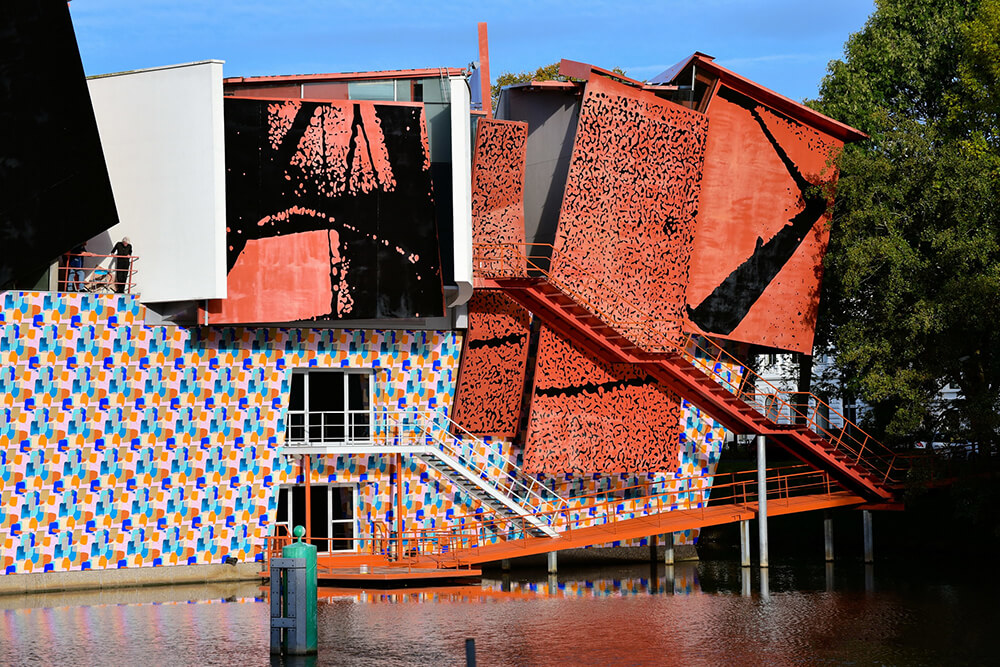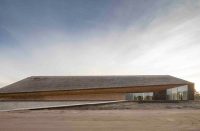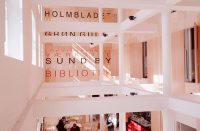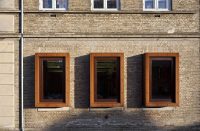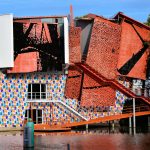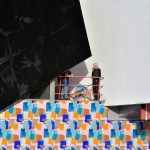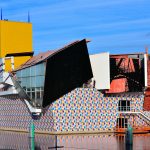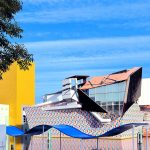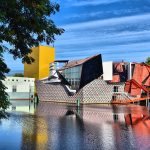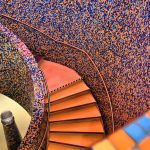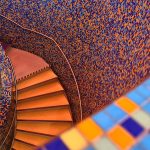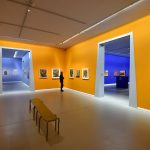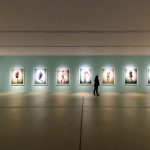Architect(s): Coop Himmelb(l)au
Address: Museumeiland 1, GRONINGEN, Netherlands
Latitude/Longitude: 53.212289900357185,6.566174657326783
The complex of the Groninger Museum is a fancy combination of forms, colors and materials. The overall planning was done by Alessandro Mendini, based in Milano, who invited the designers Philippe Starck and Michele De Lucchi, as well as Coop Himmelb(l)au, to conceive the various building units. Coop Himmelb(l)au was in charge of the East Pavilion of the museum.
Groningen is a key work for Coop Himmelb(l)au. For the first time in the history of the office, the conception of a space breaking the prison of the functionalistic box into a thousand pieces was realized on a large scale. Thanks to the so-called space-arm, the design of the 3D model of the pavilion was able to be digitized and translated into plans. This new technology allowed a previously unknown latitude in designing fantastic forms, spaces and structures.
The whole pavilion is a three-dimensional artwork, resting on the pedestal clad by Mendini. The design aims to generate an ’open architecture‘, an interaction between the inside and the outside, surprising the visitor with sudden glimpses to the outside world. The walls are made of steel and glass to enable daylight to enter at unexpected places. The visitor can also suddenly find himself standing on a platform above the town canal. Paths at different levels allow the viewing of the artworks from all sides: at ground level or from the gantry cutting through the exhibition area a few meters above the floor. The structure is comprised of large, double-walled steel plates, filled with hardened glass at points where they do not quite meet. The first sketch of the project, drawn by Wolf D. Prix with his eyes closed, was digitally enlarged to the scale of the building, and painted on the steel plates with black and red tar.
”One has to imagine that it will take 100 years for the 4 mm steel plates to rust away, but since the drawing is done in tar it will not rust. After 100 years, it will be the Museum that is gone, and only the sketch done in tar that remains,“ Wolf D. Prix.
In order to work within the tight budget and timeframe given by the client, local shipbuilding methods were used to construct the primary elements of the East Pavilion. The steel plates, prefabricated at a shipyard east of Groningen, arrived on site via barge - their insulation, paint and edge details already complete. This streamlined process resulted in a very quick and economical construction phase, and a building whose materials and all-welded details are similar to those of a ship.
Text description provided by the architects.
Gross floor area: 900m²
Gross volume: 4300m³

